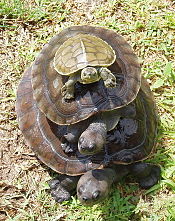
Emydidae is a family of testudines (turtles) that includes close to 50 species in 10 genera. Members of this family are commonly called terrapins, pond turtles, or marsh turtles. Several species of Asian box turtles were formerly classified in the family; however, revised taxonomy has separated them to a different family (Geoemydidae). As currently defined, the Emydidae are entirely a Western Hemisphere family, with the exception of two species of pond turtle.

The Arakan forest turtle is a critically endangered turtle species native to the Arakan Hills in western Myanmar and the bordering Chittagong Hill Tracts in Bangladesh. The Arakan forest turtle is a semiterrestrial turtle, meaning it can survive in aquatic as well as terrestrial habitats, but adults prefer living in terrestrial habitats.

Heosemys is a genus of freshwater turtles in the family Geoemydidae. The genus Heosemys was split out of the related genus Geoemyda by McDowell in 1964.

Siebenrockiella leytensis is a species of freshwater turtle endemic to the Philippines. It is classified as critically endangered. It is known as the Philippine forest turtle, the Philippine pond turtle, the Palawan turtle, or the Leyte pond turtle. Despite the latter common name, it does not occur in the island of Leyte but is instead native to the Palawan island group. It is locally known as bakoko in Cuyonon.

The spiny turtle is a South-East Asian turtle species. It inhabits lowland and hill rainforest, usually dwelling in the vicinity of small streams in hill areas up to 1,000 m above sea level. It is found in Brunei, Indonesia, Malaysia, Myanmar, the Philippines, Singapore, and Thailand.

Oldham's leaf turtle is a species of turtle in the family Geoemydidae.

The Cochin forest cane turtle, also known as Kavalai forest turtle, forest cane turtle or simply cane turtle, is a rare turtle from the Western Ghats of India. Described in 1912, its type locality is given as "Near Kavalai in the Cochin State Forests, inhabiting dense forest, at an elevation of about 1500 feet above sea level". Only two specimens were found at that time, and no scientist saw this turtle for the next 70 years. It was rediscovered in 1982, and since then a number of specimens have been found and some studies have been conducted about its phylogeny and ecology.

The brown roofed turtle is a species of turtle in the family Geoemydidae. The species is endemic to South Asia. Two subspecies are recognized.

The Caspian turtle, also known as the striped-neck terrapin, is a species of turtle in the family Geoemydidae (=Bataguridae). It is found in west Asia, in Iran and central Turkey, northward to the Republic of Georgia and eastward to southwestern Turkmenistan, and in Iraq, Saudi Arabia, and Bahrain.
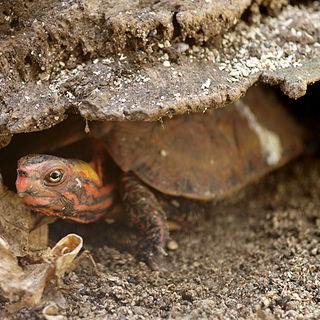
The Ryukyu black-breasted leaf turtle or Ryukyu leaf turtle is a species of turtles in the family Geoemydidae endemic to the Ryukyu Islands in Japan. In 1975, the species was designated a National Natural Monument of Japan. It grows to about 5–6 inches long. In captivity, it feeds on worms, snails, insects, and fruit. Due to its rarity and very attractive appearance, this species is highly coveted by turtle collectors worldwide.

Geoemyda is a genus of freshwater turtles in the family Geoemydidae. It contains two species:
The Sulawesi forest turtle is a critically endangered species of turtle in the family Geoemydidae. The species is monotypic within the genus Leucocephalon. It is endemic to Sulawesi in Indonesia.
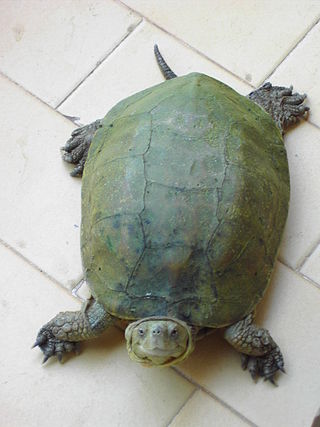
Mauremys is a genus of turtles in the family Geoemydidae.

Sacalia is a genus of turtles in the family Geoemydidae. The genus was erected by John Edward Gray in 1870. The Sacalia is native to Southereastern China, Laos, and Vietnam. It was declared an endangered turtle species by the IUCN Red List due to its illegal trade. The sacalia has a carapace of dark-brown color that permits it to camouflage to its habitat. They are believed to select the area of a river that better matches their color.

Siebenrockiella crassicollis is a freshwater turtle endemic to Southeast Asia. It is one of two species classified under the genus Siebenrockiella in the family Geoemydidae.
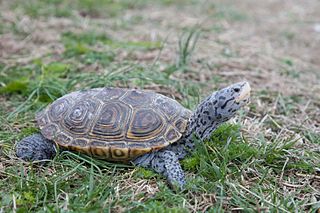
Terrapins are a group of several species of small turtle living in fresh or brackish water. Terrapins do not form a taxonomic unit and may not be closely related. Many belong to the families Geoemydidae and Emydidae.

The Geoemydinae are a subfamily of turtles consisting of 60 subspecies and 76 taxa.

Cyclemys is a genus of freshwater turtles, commonly referred to as Asian leaf turtles, from the family Geoemydidae. The genus occurs throughout Southeast and South Asia, and currently contains seven species.
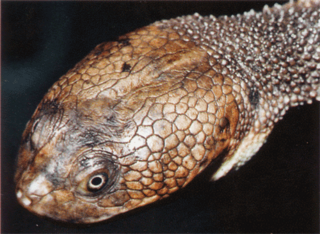
Chelodina canni, also known commonly as Cann's snake-necked turtle, is a species of turtle in the family Chelidae. The species is endemic to Australia, where it is found in the northern and northeastern parts of the continent. It has a narrow zone of hybridization with its related species the eastern snake-necked turtle, C. longicollis. For many years C. canni was assumed to be the same species as C. novaeguineae from New Guinea. However, in 2002 it was shown that these two species differ both morphologically and genetically, and therefore C. canni was separated and described as a unique species.

Batagur is a genus of large turtles from South and Southeast Asia. All members of the genus are seriously threatened. With a 2007 merger with members from two other genera, this genus has six described species.



















